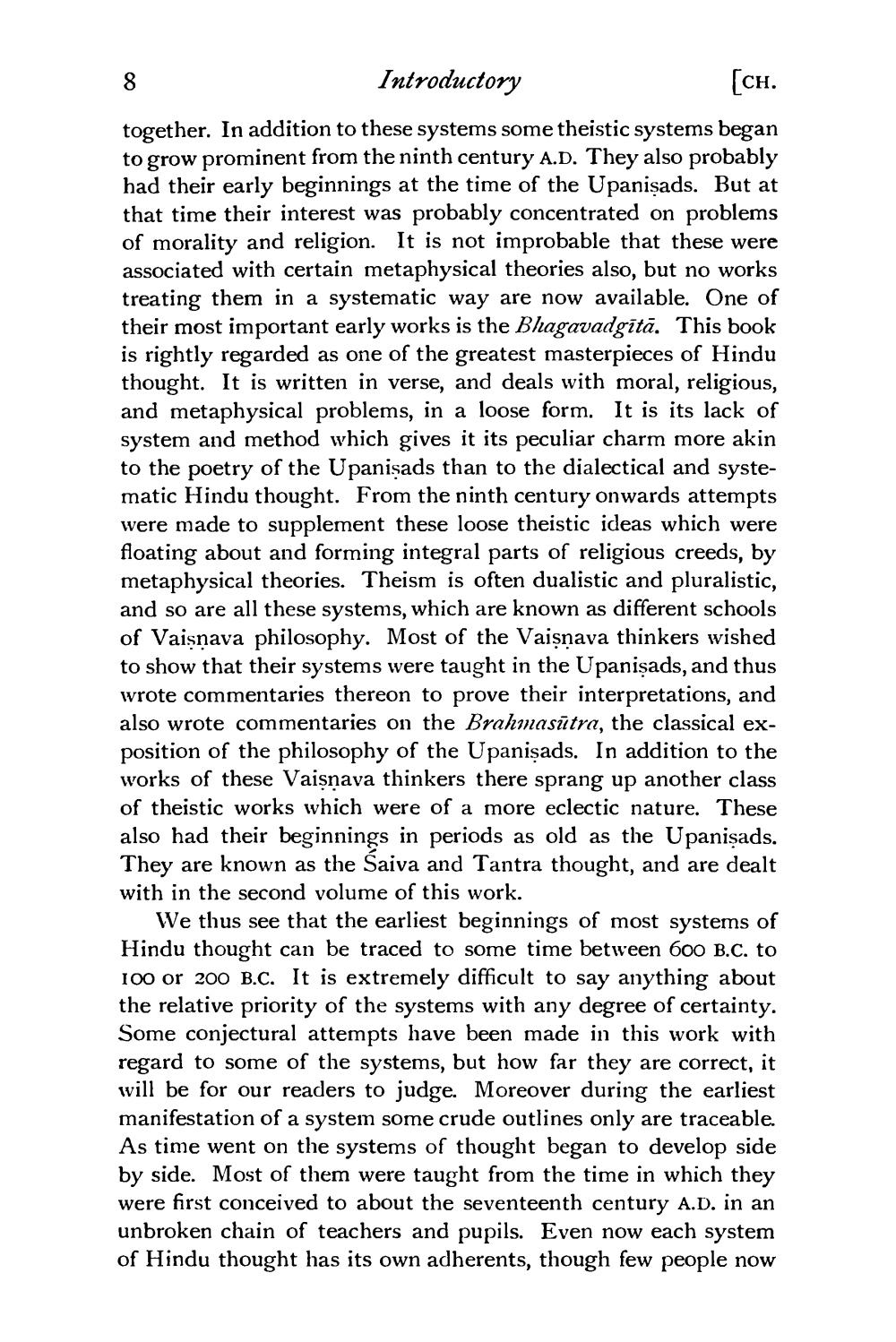________________
(CH.
Introductory together. In addition to these systems some theistic systems began to grow prominent from the ninth century A.D. They also probably had their early beginnings at the time of the Upanişads. But at that time their interest was probably concentrated on problems of morality and religion. It is not improbable that these were associated with certain metaphysical theories also, but no works treating them in a systematic way are now available. One of their most important early works is the Bhagavadgītā. This book is rightly regarded as one of the greatest masterpieces of Hindu thought. It is written in verse, and deals with moral, religious, and metaphysical problems, in a loose form. It is its lack of system and method which gives it its peculiar charm more akin to the poetry of the Upanişads than to the dialectical and systematic Hindu thought. From the ninth century onwards attempts were made to supplement these loose theistic ideas which were floating about and forming integral parts of religious creeds, by metaphysical theories. Theism is often dualistic and pluralistic and so are all these systems, which are known as different schools of Vaisnava philosophy. Most of the Vaisnava thinkers wished to show that their systems were taught in the Upanişads, and thus wrote commentaries thereon to prove their interpretations, and also wrote commentaries on the Brahmasītra, the classical exposition of the philosophy of the Upanisads. In addition to the works of these Vaisnava thinkers there sprang up another class of theistic works which were of a more eclectic nature. These also had their beginnings in periods as old as the Upanişads. They are known as the Saiva and Tantra thought, and are dealt with in the second volume of this work.
We thus see that the earliest beginnings of most systems of Hindu thought can be traced to some time between 600 B.C. to 100 or 200 B.C. It is extremely difficult to say anything about the relative priority of the systems with any degree of certainty. Some conjectural attempts have been made in this work with regard to some of the systems, but how far they are correct, it will be for our readers to judge. Moreover during the earliest manifestation of a system some crude outlines only are traceable. As time went on the systems of thought began to develop side by side. Most of them were taught from the time in which they were first conceived to about the seventeenth century A.D. in an unbroken chain of teachers and pupils. Even now each system of Hindu thought has its own adherents, though few people now




